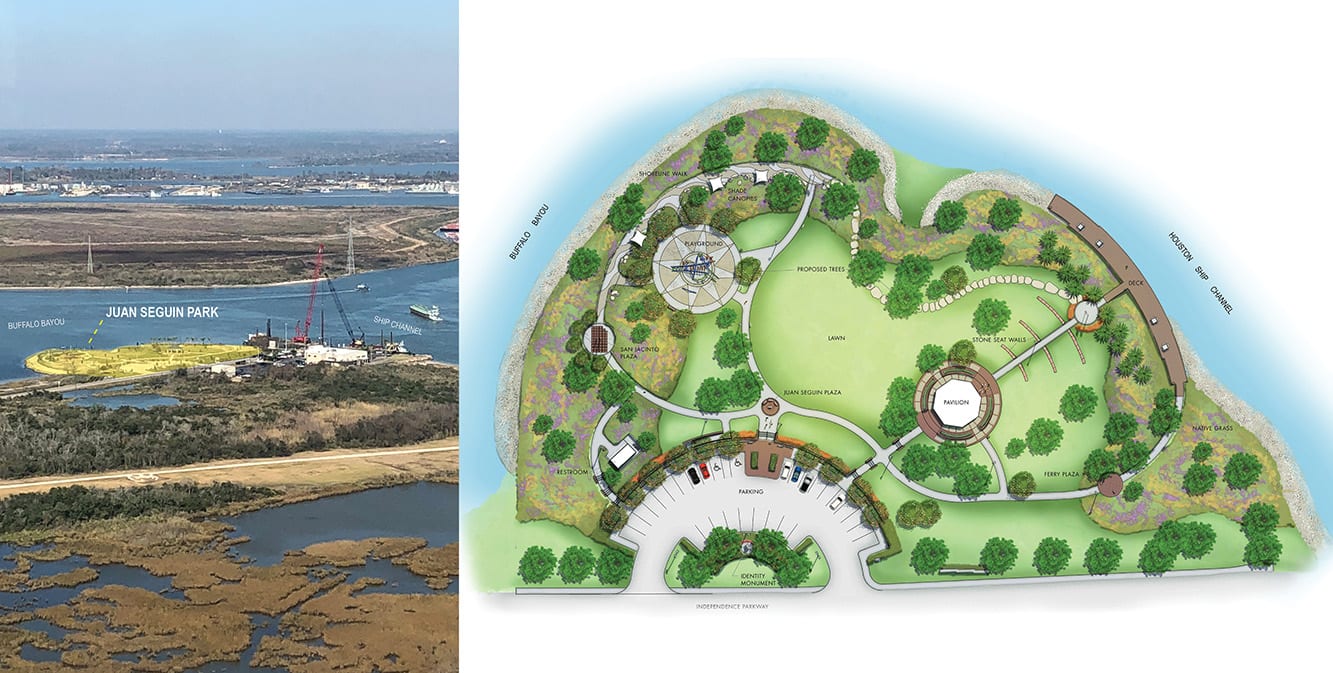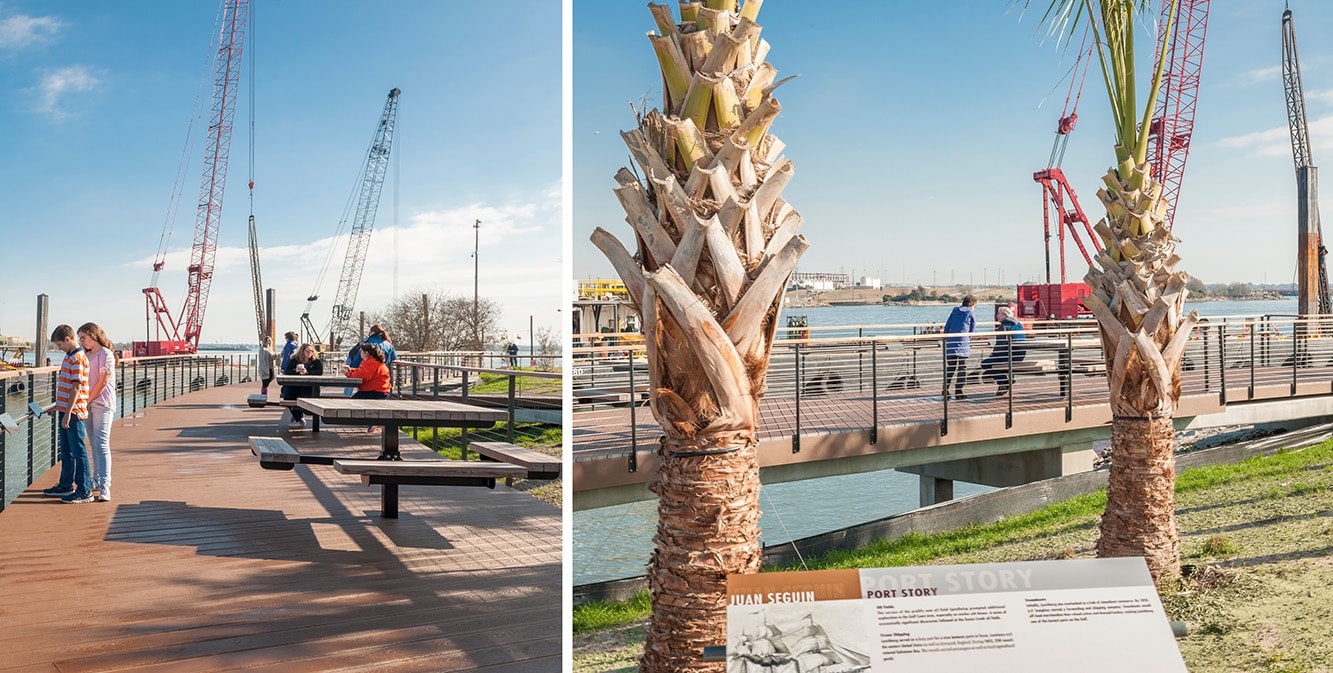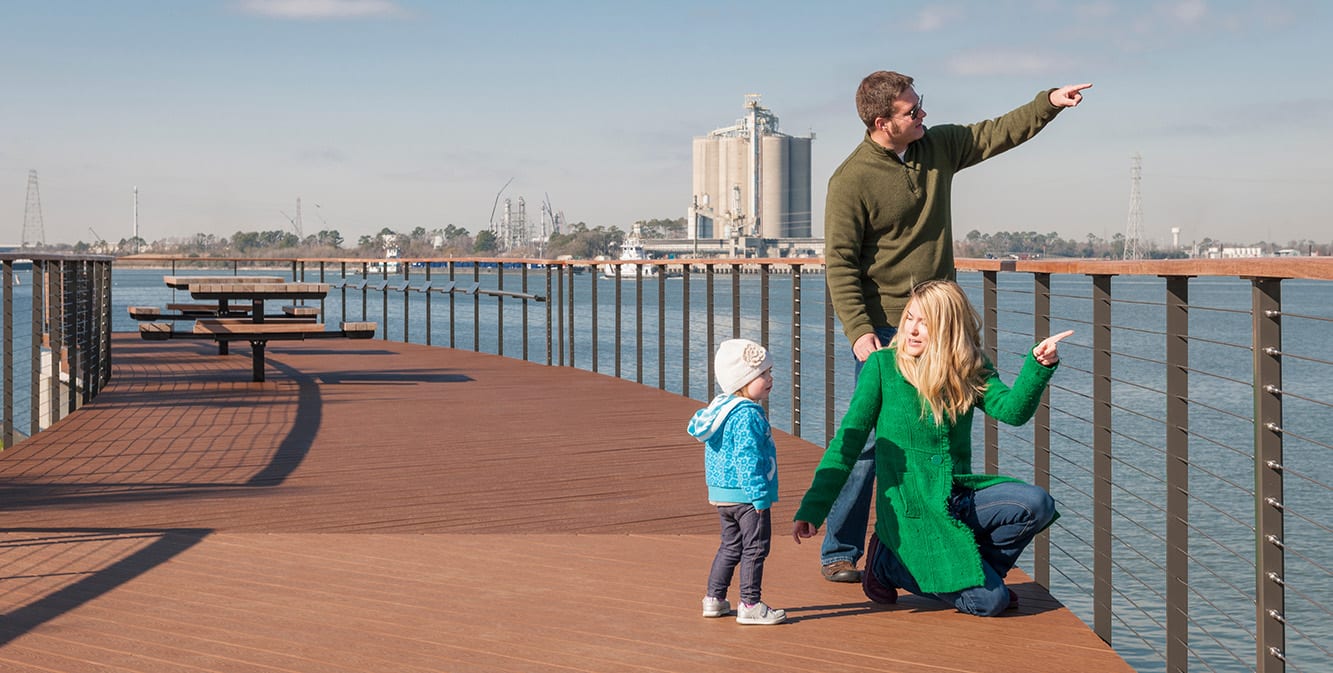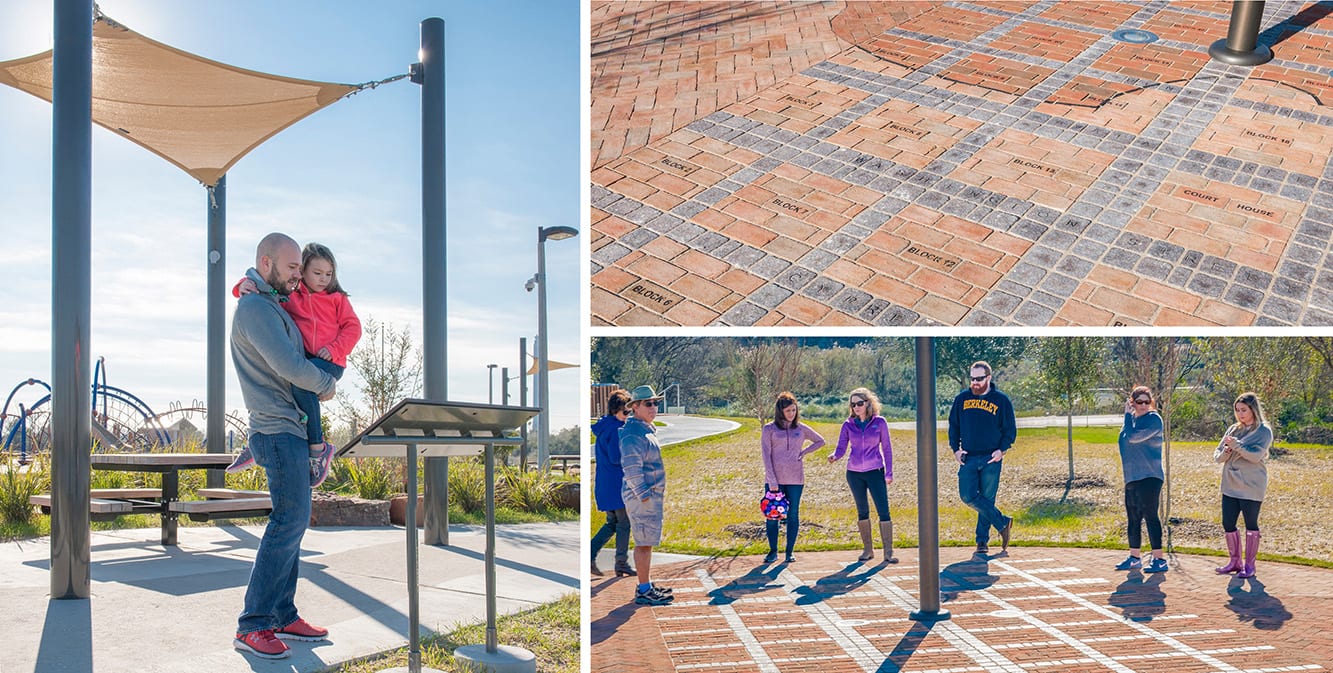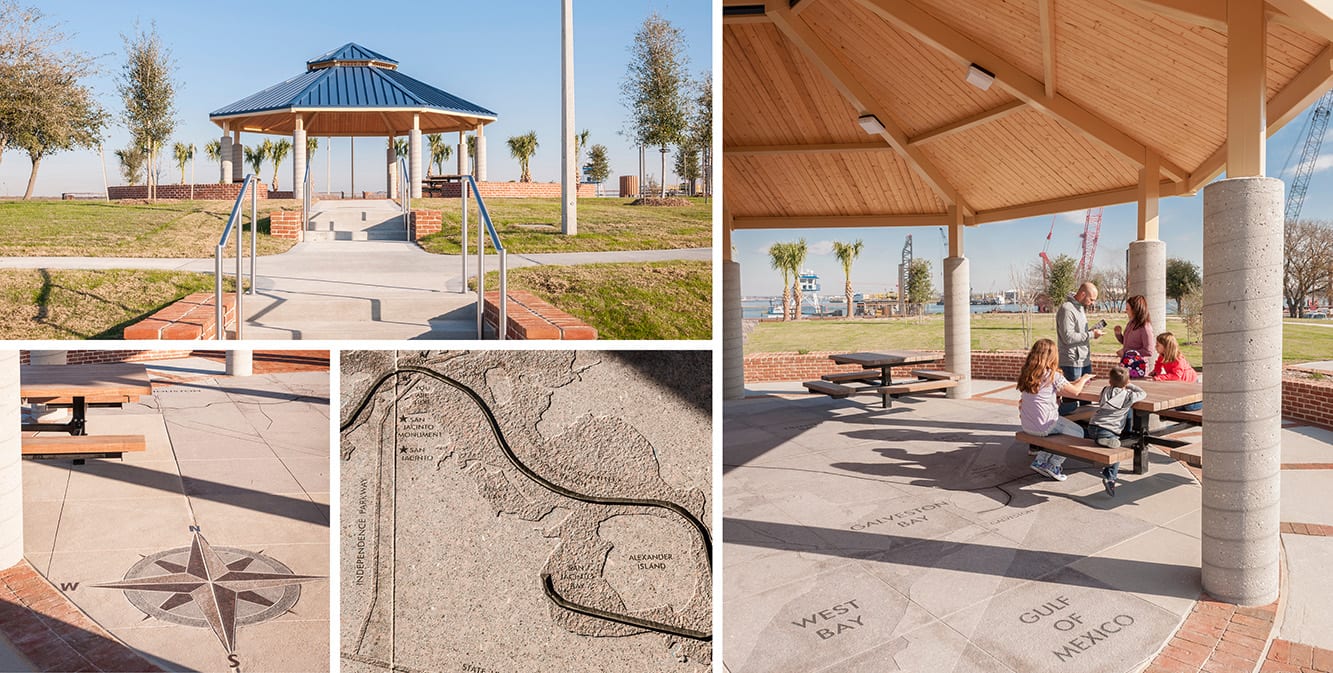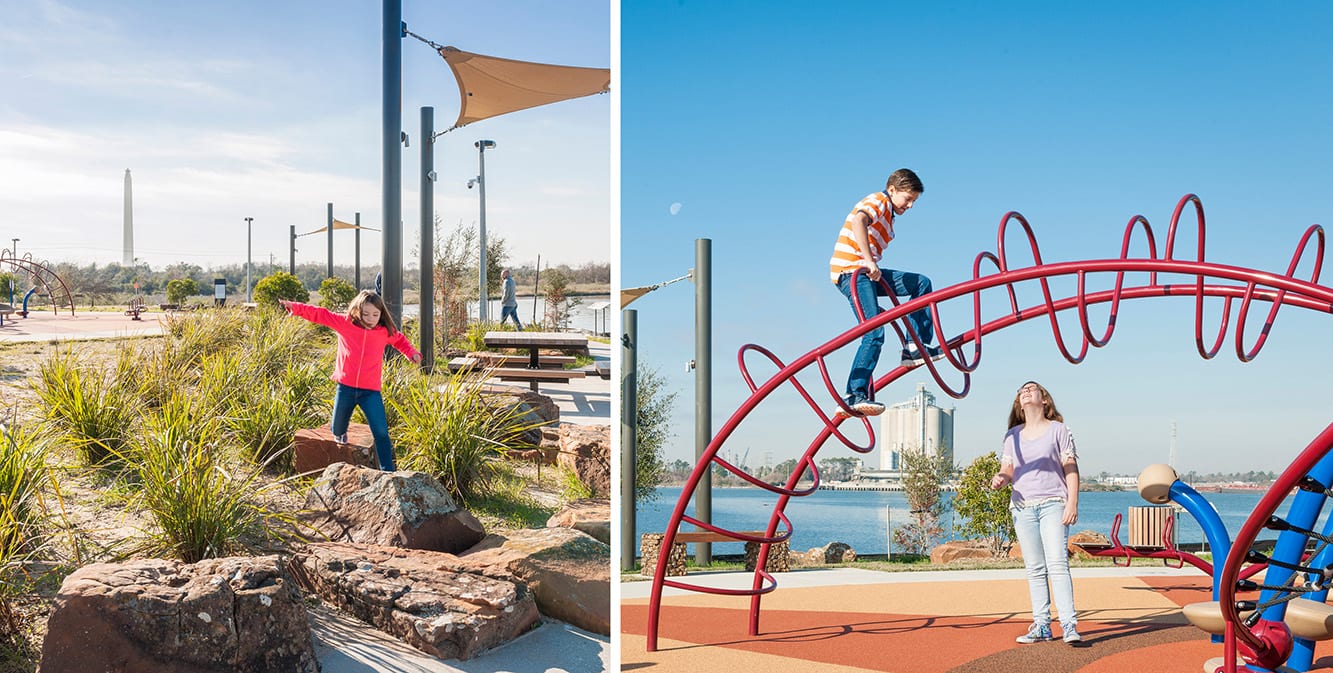CASE STUDY
BRINGING TEXAS HISTORY TO LIFE
CLIENT: Harris County Precinct 2
PROJECT: La Porte Texas Park
In order to capture the compelling history and historical significance of Juan Seguin, Clark Condon collaborated to reimagine a former construction spoil site into a regional education destination.
The Scene
Rebellion, revolution, conflict and civil war contributed to Texas’ history and defined the borders of the second-largest state in the United States of America. In 1821, Mexico won independence from Spain resulting in turmoil and a strong opposition among colonists and Tejanos. This led to the Texas Revolution in 1835 that spawned some of the biggest influential names associated with Texas’ history, like Sam Houston, William B. Travis, James Bowie, Davy Crockett, David G. Burnet - and Juan Seguin – the namesake for this park.
Juan Nepomuceno Seguin, born October 27, 1806 in San Antonio, had an illustrious political and military career. At 28 years old, Juan Seguin formed a militia group to aide against the Centralist forces of Mexican politician Antonio Lopez de Santa Anna. Commissioned as a captain by Stephen F. Austin, Juan’s company fought in the Battle of the Alamo, and Juan survived only because he was sent away as a courier before the Alamo fell. Juan organized a new company and on April 21, 1836, Captain Juan Seguin and his Tejano unit fought for Texas Independence alongside General Sam Houston's troops in the Battle of San Jacinto. Seguin was the only commissioned officer to fight at both the Alamo and San Jacinto.
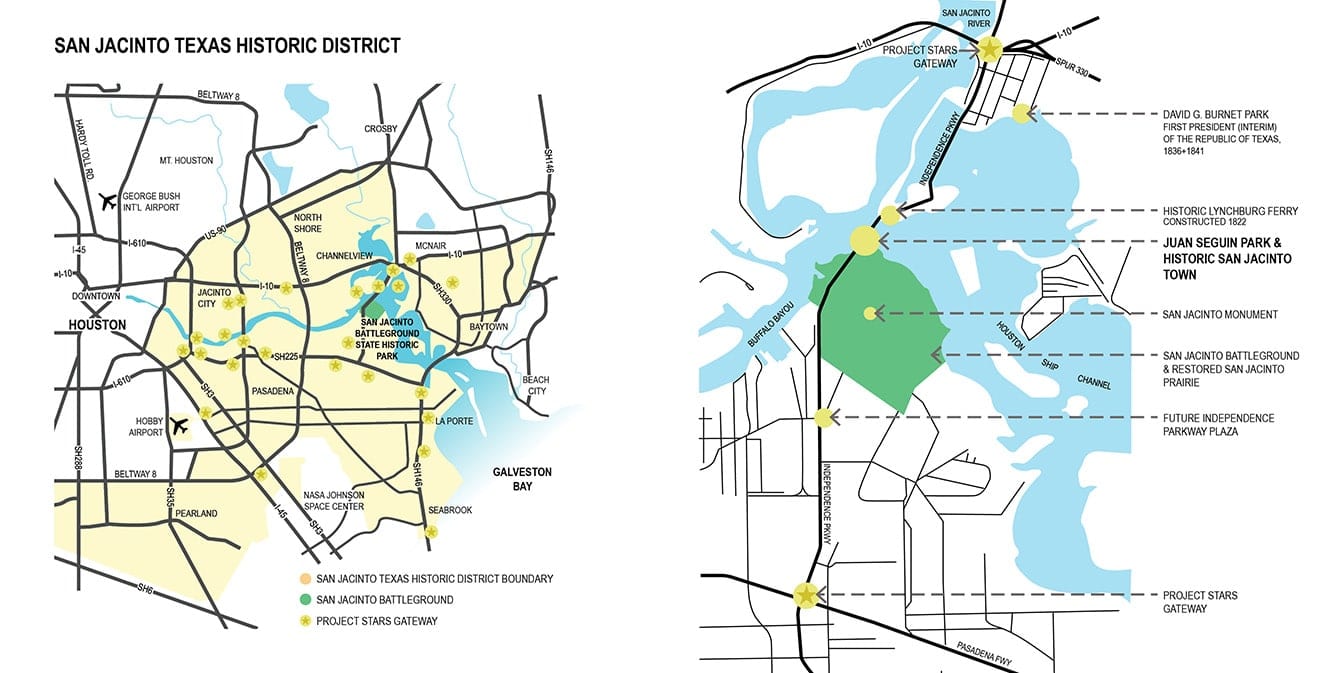
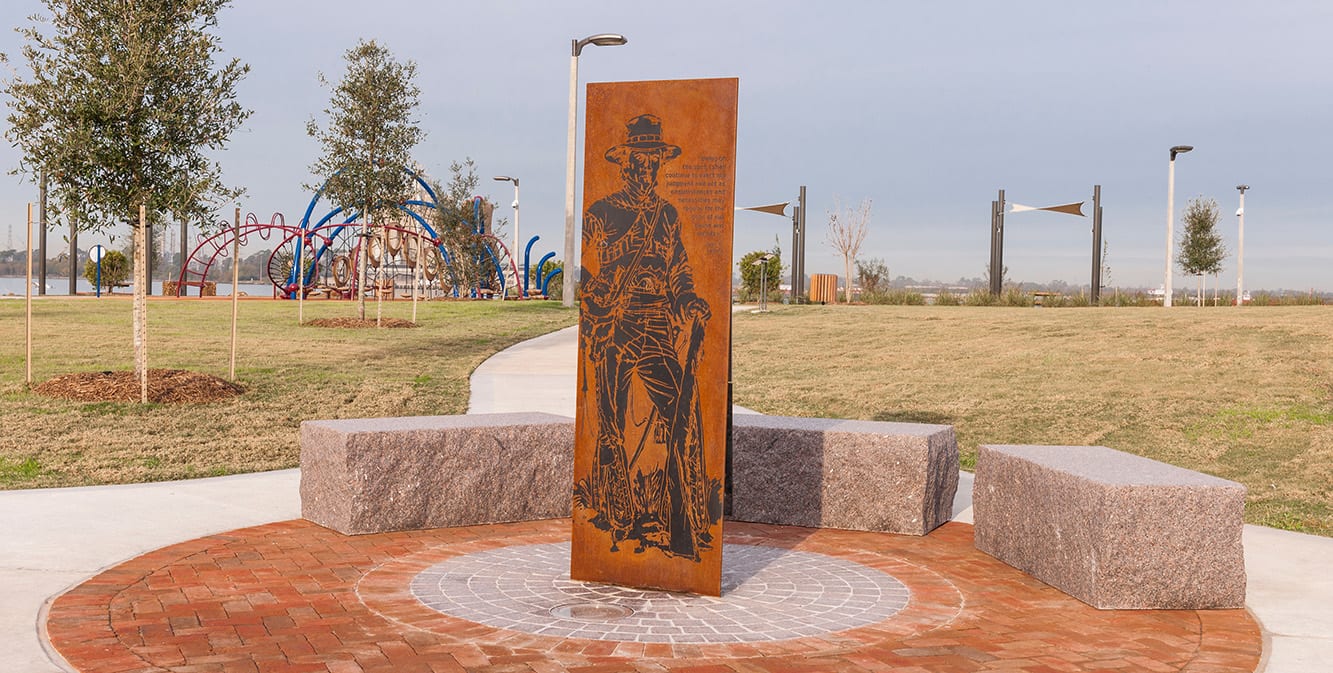
The Project
Juan Seguin Park is at the confluence of Buffalo Bayou, the San Jacinto River and the Houston Ship Channel, and just two miles from the San Jacinto Battleground historic site. The six-acre park was also the former townsite for San Jacinto Town, a once thriving area but devastated by repeated hurricanes. The town was little more than a fishing camp after 1915 and, over time, became a construction spoil site. Over 140 tons of large concrete slabs removed from the site were reused as rip rap for bank stabilization along the ship channel’s edge. The design team envisioned the park to be a dedication to Juan Seguin and his efforts for the history of Texas and also to pay homage to the area’s rich history including old San Jacinto Town, the Houston Ship Channel, the Lynchburg Ferry, and the San Jacinto Battleground. Juan Seguin Park was designed to enhance the experience of visitors to the area and provide an opportunity for families and children to immerse themselves into the history in a three-dimensional way.
The process
In order to capture the compelling history and historical significance of Juan Seguin, the design team, Harris County Precinct 2, Juan Seguin’s family and the Sons and Daughters of the Republic of Texas, collaborated to re-imagine an abandoned city into a regional educational destination celebrating the Tejano hero and the importance of the land today. Beginning with a master plan, Clark Condon designed the framework for this park located in a heavy industrial area. The expansive greenspace is layered with historical attributes, active and passive recreation opportunities, and picturesque views of the Houston Ship Channel. What once was littered with debris, trash, discarded tires and concrete, is now a welcome respite along Independence Highway that marks so many important Texas history landmarks.
Materiality, storm water management and planting were crucial elements to consider while designing the park. The material theme of Juan Seguin coincides with surrounding parks and existing monument identity, providing a cohesive look for the area. Durable materials were chosen for long-lasting park usage and to weather the sometimes-harsh gulf coast climate. Water runoff is controlled and collected by filtering through the native grasses and rip rap before entering the ship channel. Also, due to its remote location, a composting toilet was installed. Prone to hurricanes and flooding, the site is designed to withstand major weather events and remained undamaged after the record-breaking flooding of Hurricane Harvey.

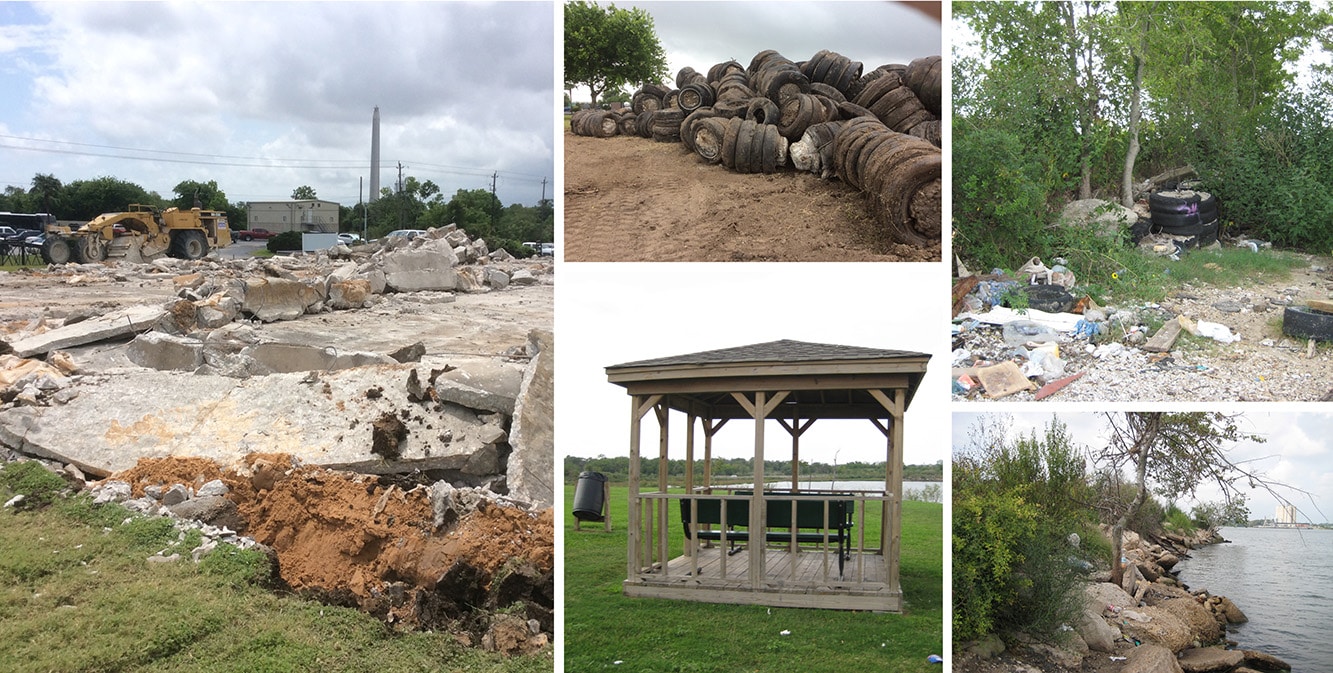
The result
Weathered steel graphics are located throughout the park and tell historical stories in a three-dimensional way that detail the life and accolades of Juan Seguin, as well as the regional history of the area. A plaza of old San Jacinto Town is laid with clay pavers and granite cobbles detailing each city block, a replica of the 1829 plat.
A large playground is featured in the center of a large mariner’s compass, orienting the visitor and emphasizing the impact of the Houston Ship Channel on the area. Picnic tables and shade sails among the native grasses, trees and boulders, provide shaded seating with unrestricted views of the ship channel and the passing maritime vessels. A curved boardwalk along the ship channel extends along the water’s edge and has interpretive signage describing the history of the Houston Ship Channel. The park also has large, open picnic pavilion with a custom floor inlay of etched granite outlining the configuration of the ship channel and various landmarks stretching from the Gulf of Mexico to the City of Houston and Port of Houston.
Native trees, grasses and prairie plants were introduced, as water for irrigation was not accessible to the park. The reestablishment of the native prairie is a critical element of the park and surrounding area. The prairie has historical significance in the area in terms of native coastal landscape. The tall prairie grasses provided a hiding place for the Texian Army while they waited to attack Santa Anna’s army in the Battle of San Jacinto. Restoring the land to its native state is just another facet that was included in the design of Juan Seguin Park.
History has been restored through creative design, careful detailing, materials selection and the introduction of graphics so visitors and Texans alike can learn about the historical significance of this area and enjoy it for years to come. Situated close to destinations like the USS Texas and the San Jacinto Monument, the park will become an asset to those visiting and further the historical educational opportunities of the area in addition to serving as an example of a re-purposed site.

